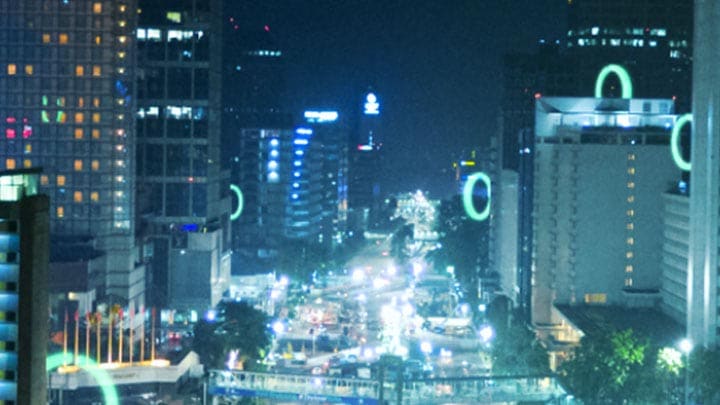Cities may cover only 2% of the earth’s surface, but they are responsible for consuming 75% of its energy and producing more than 70% of greenhouse gas emissions. As urban areas worldwide continue to grow, so does the urgency to make them more sustainable, efficient, and livable.
Lighting is ubiquitous in cities, illuminating roadways, outdoor spaces, and municipal buildings. And while a single light bulb consumes a small amount of energy, once you start lighting entire cities, the total impact becomes significant—especially if you’re still relying on inefficient, conventional lighting systems.
Swapping outdated technologies for connected LED lighting presents a real opportunity for cities to unlock negawatts—energy savings through increased energy efficiency. In fact, a lighting upgrade is one of the fastest and least disruptive ways to support climate action, while also improving energy security and laying the ground for more complex smart city renovations.
Why public lighting is key to climate action
Public street and area lighting alone accounts for about 1% of global electricity demand and a staggering 25% of municipal electricity use. Outdated lighting systems are burning through energy budgets and unnecessarily adding to carbon emissions.
The solution is clear: switch over to energy-efficient LED and connected lighting systems. LEDs already offer energy savings of up to 50% compared to traditional technologies. But when combined with smart controls—like motion sensors, adaptive dimming, and remote management—savings can soar to 80%.
In a city of 1.5 million people, this simple upgrade could save 80 GWh in public outdoor lighting, 140 GWh in lighting for public buildings, and 51 tons of CO₂ emissions annually. That’s comparable to taking thousands of fossil fuel-powered cars off the road.
Policy and progress around the world
Lighting can be used in the renovation of both indoor and outdoor infrastructures. In Europe, the revised Energy Efficiency Directive requires all EU countries to renovate 3% of government-owned buildings annually. Programs like Bulgaria’s €76 million outdoor lighting modernization, funded by the EU Recovery and Resilience Facility, are already underway.
As always, policy support varies by region, but momentum is building. As the single largest energy consumer in the US, the federal government faces a challenge to renovate its 350,000 municipal buildings—but this also represents a huge opportunity. Decarbonizing these could deliver $134 million by mid-century and cut carbon emissions by around 2 million metric tons. Washington, D.C., Chicago, and Seattle are already modernizing.
Laying the foundations for smart cities
The transition to connected LED lighting isn’t just about energy savings. Smarter lighting means safer streets, cleaner air, and more resilient urban infrastructure—delivering benefits that extend well beyond cost reduction.
Also, by upgrading to Internet of Things (IoT)-enabled platforms, municipal leaders can:
Centralized management systems also eliminate the need for crews to drive around town at night scouting for street lighting outages. Alerts and diagnostics are automatic and remote, saving time, cutting emissions, and improving reliability.
The path ahead
Mayors and civil servants have a triple challenge: limited budget, net-zero goals, and a mandate to improve the quality of life for citizens. As cities race toward net-zero goals, lighting upgrades are a powerful first step. With half of the urban infrastructure for 2050 yet to be built, there’s an unparalleled opportunity to embed energy efficiency and connectivity into the fabric of our cities from the start. By transforming the way we light our streets and buildings today, we can illuminate a path to a cleaner, smarter, and more sustainable tomorrow.
To learn more, read our white paper Unlocking negawatts: The role of lighting in energy security and decarbonization, developed in collaboration with our partner Climate Group.
Signify (Euronext: LIGHT) is the world leader in lighting for professionals, consumers and the Internet of Things. Our Philips products, Interact systems and data-enabled services, deliver business value and transform life in homes, buildings and public spaces. In 2023, we had sales of EUR 6.7 billion, approximately 32,000 employees and a presence in over 70 countries. We unlock the extraordinary potential of light for brighter lives and a better world. We have been in the Dow Jones Sustainability World Index since our IPO for seven consecutive years and have achieved the EcoVadis Platinum rating for four consecutive years, placing Signify in the top one percent of companies assessed. News from Signify can be found in the Newsroom, on X, LinkedIn and Instagram. Information for investors is located on the Investor Relations page.
